Introduction
Delphinium plants truly reign supreme in any cottage garden, creating phenomenal tall spikes of majesty in blue, purple, pink, and white colors that can be seen from a distance at over 8 feet in height. They’re a favorite of gardeners for several reasons; not only their beautiful color, height and presence, but they are making great cutting flowers and attract butterflies and hummingbirds!
Whether you’re an experienced or novice gardener, growing delphinium successfully means knowing how to provide what they really need. In this comprehensive guide, you will learn the best methods for planting, growing, and caring for amazing flowers that will impress everyone who sees them and makes your garden a showstopper!
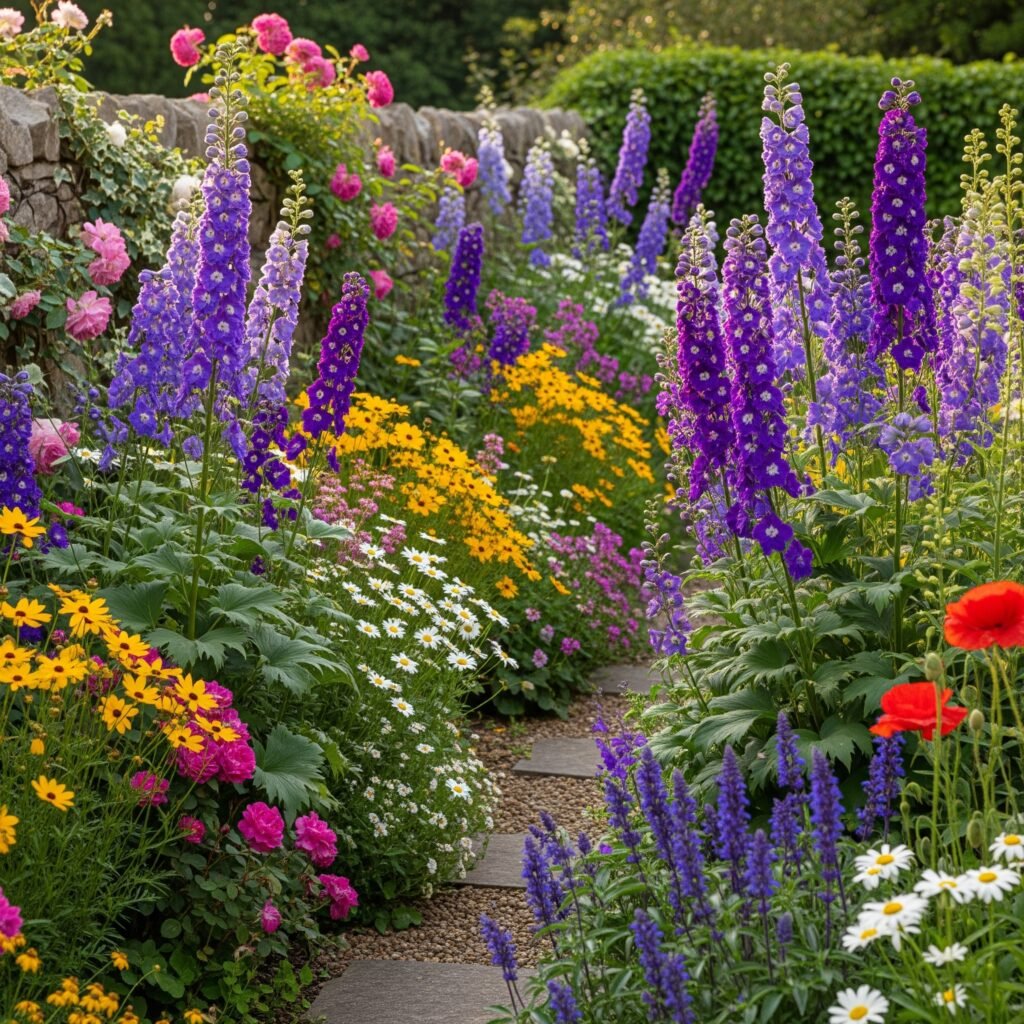
- 1. Understanding Delphinium Plant Varieties
- 2. Best Growing Conditions for Delphinium Plants
- 3. How to Plant Delphinium Successfully
- 4. Essential Care and Maintenance Tips
- 5. Watering and Feeding Requirements
- 6. Supporting and Staking Tall Varieties
- 7. Common Problems and Solutions
- 8. Propagation Methods
- 9. Seasonal Care Guide
- FAQ
1. Understanding Delphinium Plant Varieties
There are several different groups of Delphinium, each group having different characteristics and requirements for growing. All gardeners should be familiar with three major categories from which the most popular varieties fall.
Elatum Group features the largest-growing delphiniums, with typical heights of 5–6 feet and occasional plants to 8′ tall. They have dense flower spikes in beautiful blue, purple, pink, and white. There are many wonderful cultivars, including the deep purple blooms of ‘Black Knight’ and the clear white flowers of ‘Galahad.’ These giants you are looking up to as short-lived perennials (2–3 years).
For smaller gardens, The Belladonna Group is a more practical choice. These delphiniums rise to a height of 3-4 feet with loose branching flower spikes, prolonging the bloom time into the fall. Blue Donna, which has distinctly blue flowers, — can be relatively long-lived compared to plants in the Elatum group, which makes them good for beginners.
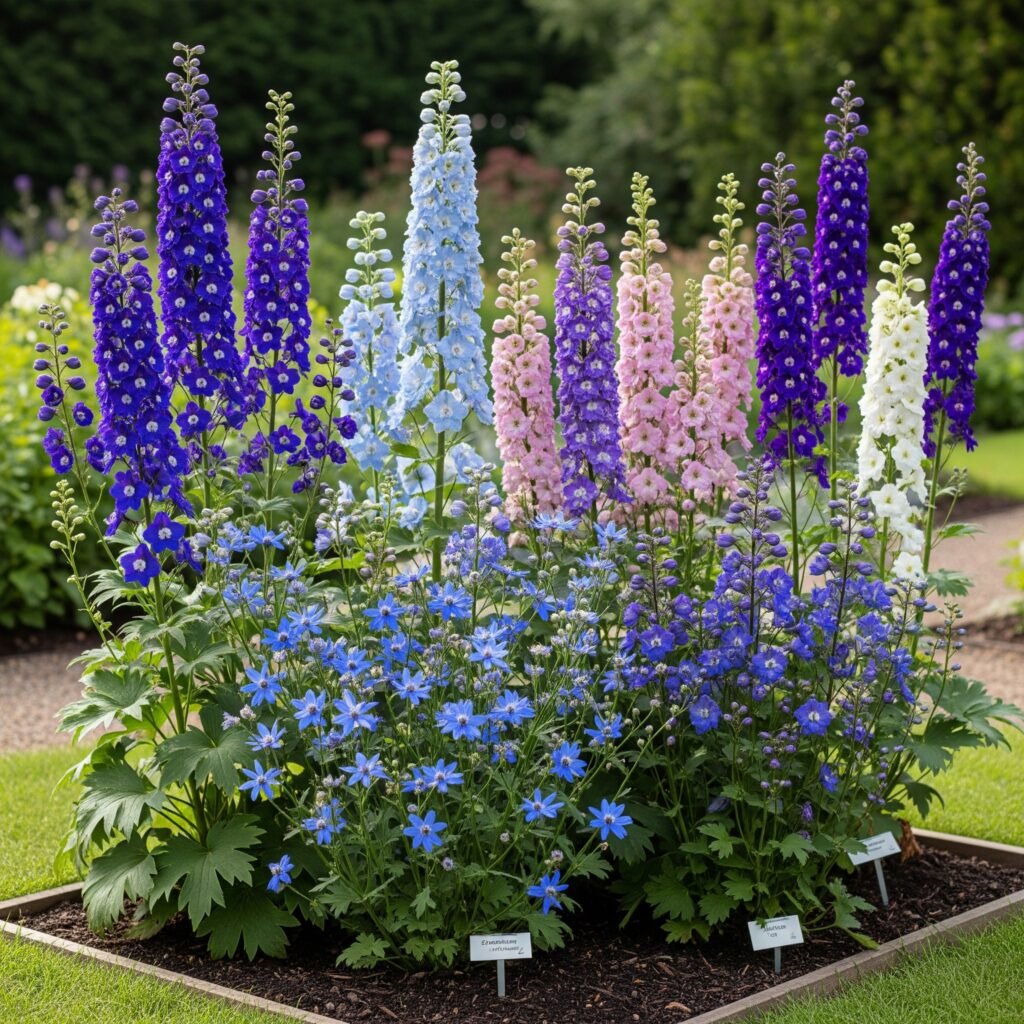
Tip Box: New gardeners should choose Belladonna Group delphinium plants that are more tolerant and permanent than the high-maintenance Elatum types.
Delphinium from the Grandiflorum Group / Chinese delphinium / Siberian delphinium: grows compact and bushy to a mere 1 to 2 feet tall. There are more heat tolerant of these varieties which do great in containers or front borders. For gardeners living in warm climates who want to experience delphinium without the hassle, these are just the thing.
2. Best Growing Conditions for Delphinium Plants
Growing delphinium plants successfully requires the perfect environment. They are перennials that came from cool mountain areas where they have developed unique needs, we gardeners must fill.
Full sun areas with 6–8 hours of direct sunlight a day, morning sun is preferred for delphinium plants. Hot summer regions (zones 8-9) require afternoon shade to keep plants cool and to avoid heat stress. Pick a spot sheltered from strong winds, as the tall, hollow stems shatter easily in storms.
The defining factor between awkward and thriving delphiniums is down to soil quality. Soils that are rich but well-draining and within the pH range of 6.5–7.5 (slightly alkaline) are optimal for their growing conditions. Clay gets improved drainage from grit or coarse sand while sandy needs a helping hand from organic matter – compost or well-rotted manure would do.
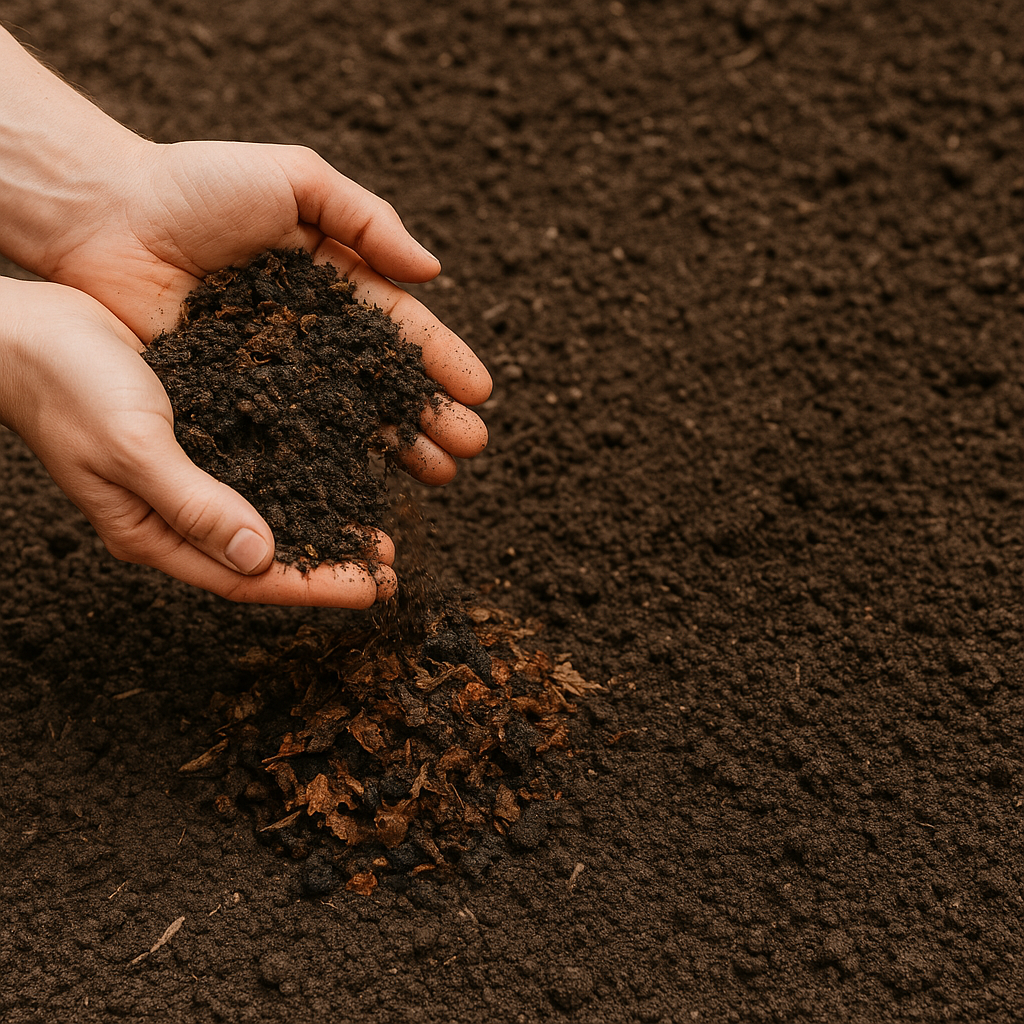
Relatable: https://spaceideasworld.com/delphiniums-planting/
Warning Box: Bad drainage is the biggest killer of delphinium plants. Their roots do not appreciate sitting in water, especially when they are dormant in the winter.
Now, we need to get back to the climate when we plan our delphinium plants. They can tolerate zones 3-7 but not well in hot, humid weather. Temps should be between 60-75°F during the day and 45-55°F during the night. Heat plus humidity promotes disease issues and a shorter plant life.
3. How to Plant Delphinium Successfully
With proper planting techniques, you set the stage for healthy delphinium that reward you with many years of amazing flowers. Both timing and manner of establishment are key.
The best time to plant delphiniums in spring (after last frost) gives them an entire growing season to establish a solid root system. Fall plantings can be successful in those areas that have mild winters, but they should be protected more than in temperate areas. As long as they are watered regularly, container-grown plants are fine to plant at any time of the growing season.
Weeks before planting the delphinium plants, a preparation site is started. Turn the planting spot 12-15 inch deep by adding 2-4 inch compost or aged manure. Such an intense feeding method guarantees the nutrient-rich atmosphere in which these hungry perennials thrive. Leave room between space plants — give them 18–24 inches apart for good air movement.

You will need to handle delphinium plants delicately when it comes to the actual planting. Now, dig your holes a little wider than the root ball and the same depth. Take still plants out from containers without breaking roots a lot. Place plants at the same depth they were growing in pots then backfill with amended soil and water thoroughly.New delphinium plants should be mulched to help retain moisture and reduce weeds. When mulch area, 2-3 inches of organic mulch shredded bark or compost (keep 2 inches away from plant crowns to prevent rot)
4. Essential Care and Maintenance Tips
Growing the perfect delphinium takes care and attention all growing season long. This knowledge will keep your flowers healthy and help them bloom abundantly.
Once delphinium plants settle in, they need monitoring. Look for evidence of pests, diseases, or stress every week. Timely detection and intervention prevent minor problems from becoming major threats that can put an end to the plants.
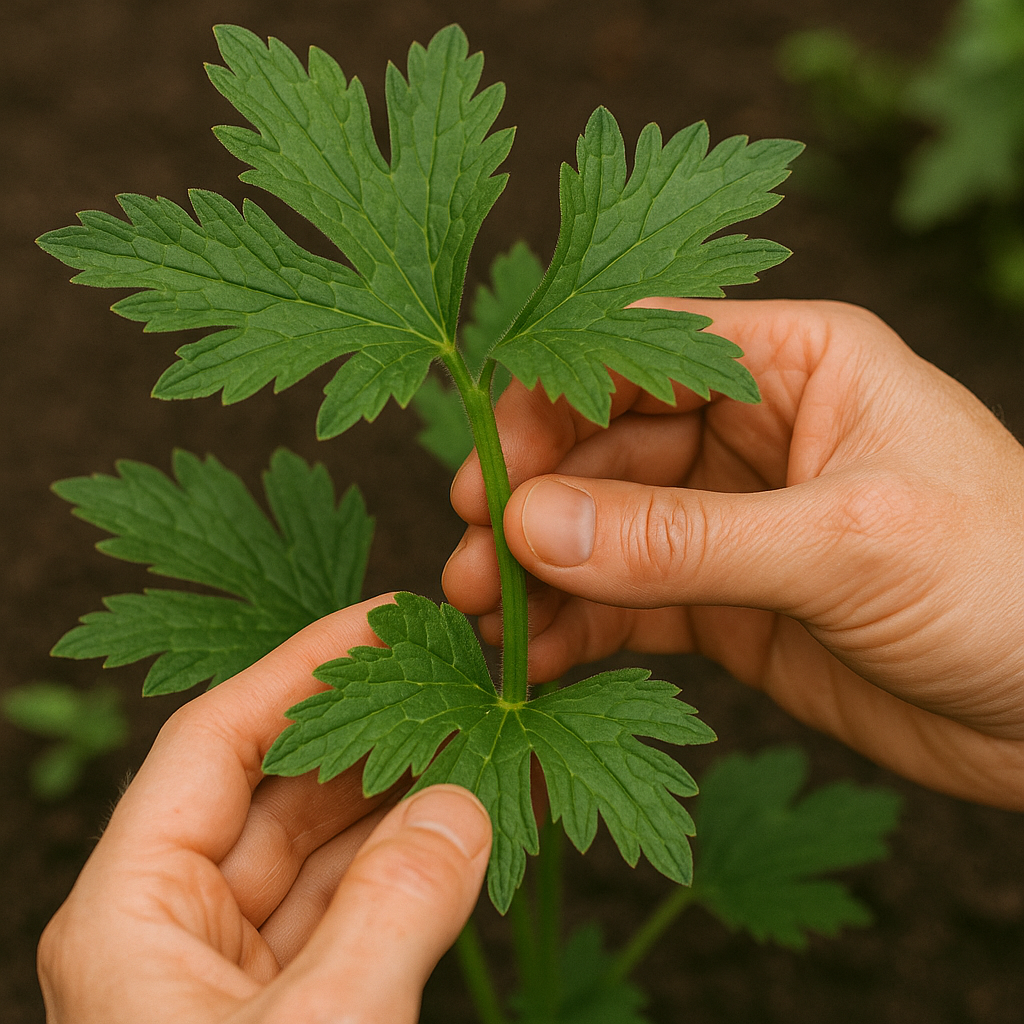
Removing spent flowers, called ‘Deadheading,’ will encourage further flowering of the delphinium. After blooms fade, cut flower stalks back to just above the first set of leaves. This often stimulates a second wave of blooms in late summer or early fall, prolonging the flowering season.
As I tell people my secret to having delphiniums that last for years is about delivering what they need instead of forcing them to live out their lives in conditions that do not suit them. – Royal Horticultural Society
Aging delphinium (larkspur) plants benefit from division every 3–4 years. In early spring, dig clumps, discard the woody centre and replant the vigorous outer parts. Hitting two birds with one stone, this practice preserves the condition of the plants and offers you new plants, perfect for a bigger garden.
5. Watering and Feeding Requirements
Known as our thirstiest and hungriest perennial, Delphinium will reward the appropriate amount of nutrition and water with stunning growth and blooms!
Delphinium plants need consistent moisture to thrive. It’s about 1 inch per week, but in very deep, infrequent waterings rather than shallow, frequent watering. Water at or near soil level to keep foliage from getting wet, encouraging fungal diseases.
In hot weather, delphiniums may need daily watering, particularly if they are in pots. To check for moisture, stick your finger into the soil about 2 inches – if it is dry, water the plants. Mulching retains soil moisture, and we need to water less frequently.
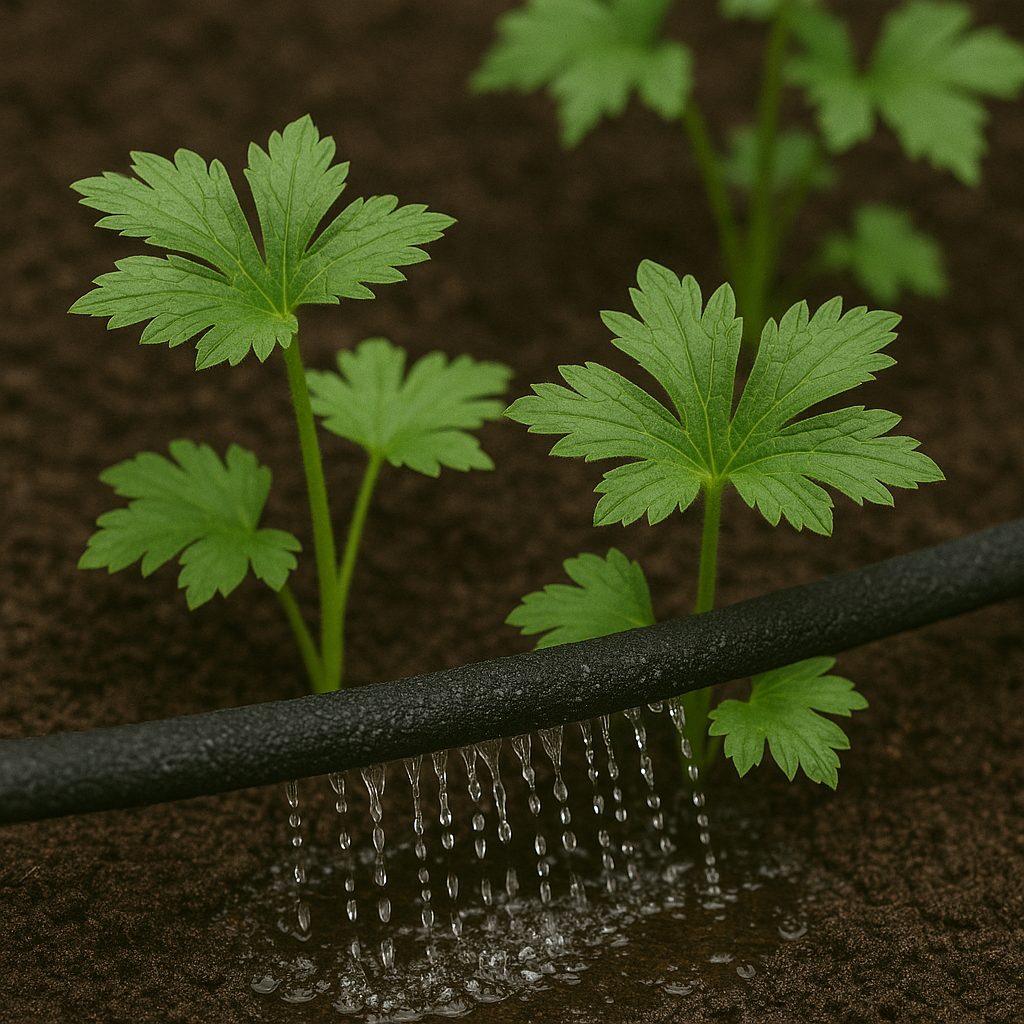
Regularly feeding delphinium plants promotes their dramatically vigorous growth & heavy flowering. It can be either balanced fertilizer (10-10-10) that is applied monthly as needed throughout the growing season or slow-release granules that are used at planting time. For best results, every 2 weeks supplement with liquid fertilizer when growth is active.
Delphinium plant responds exceptionally well to organic feeding options. These feed gradually, ameliorate structure in soil and compost, aged manure and fish emulsion are especially rich soil improvers. Bone meal is a great source of phosphorus that, when applied in early spring, will help form strong roots and blooms.
6. Supporting and Staking Tall Varieties
Stakes or similar apparatus are recommended for the taller delphinium plants to protect them from wind and/or stem breakage. Installing early and planning accordingly averts future complications.
Install stakes when the plants are 12-18-inches tall, before they get top-heavy. If you expect your plants to grow tall, then use bamboo canes, metal stakes or wooden supports that are suitable for that height. Varieties that fall under Tall Elatums require six-to-eight-foot supports.

Staking them individually is appropriate for specimen delphinium plants. Set stakes into ground to a depth of 12 inches, 6 inches from centre on plant During the growing season secure the stems with soft plant ties or garden twine as they grow to 12-inch intervals. Do not fully restricted that hinders natural movement.
For clusters of delphinium plants, support grids are an appealing alternative. Set grids 3 feet high to surround clusters of plants, their stems growing through the openings. As plants mature, this method becomes almost invisible and offers a strong barrier against wind.
7. Common Problems and Solutions
Among these are a few challenges to growing delphiniums as a gardener you can conquer with a little knowledge and swiftness.
Now, young delphinium plants, especially the emerging spring shoots, are most at risk from slugs and snails. They are able to wipe out a plant overnight, so it’s important to be on guard right away. Use slug pellets, make beer traps, or even place copper around plants.

Crown rot: Delphiniums in wet soils or when subjected to overly wet conditions are susceptible to this disease. The stems turn black close to the soil line, and the plants wilt, although the soil is wet. As the adage goes, prevention is better than cure. Remove infected plants immediately to prevent the spread of infection.
Powdery Mildew is a disease that produces white, powdery growth on leaves in humid and still air conditions for delphinium plants. Also, to the maximum degree possible, ensure that the plants are well-spaced, try to water at soil level (not over plants) and fungicidal sprays can be used if needed. This issue is reduced with resistant varieties.
Warning Box: The entire plant is poisonous to animals and humans. Avoid handling it, wearing gloves when you do adhere to it and be far away from youngsters and pets.
8. Propagation Methods
Propagation by seed is a great way to expand your garden on a budget, or to save your favourite delphinium varieties.
The most economical method of propagating delphinium is to collect seeds. Collect seeds from spent flower spikes when the pods are brown and starting to split. Keep seeds in sealed containers in the refrigerator through the winter, as they need to go through a process of cold stratification to germinate.
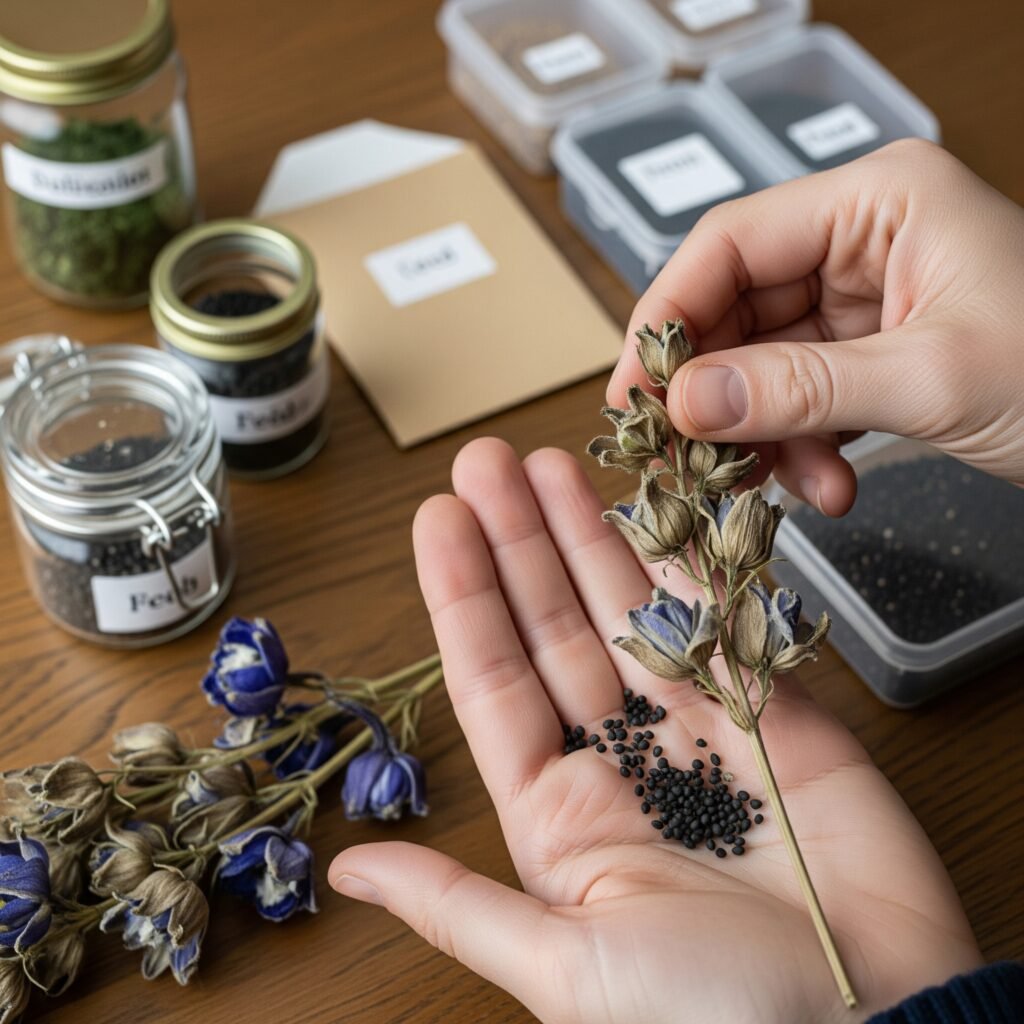
While it is possible to start delphinium from seed, it takes some skill and does take a fair bit of time. Make sure seeds are sown indoors 10-12 weeks prior to last frost, and if necessary, remove your sprinkling of soil from above. Keep soil temp at 65F and give lots of bright light after seedlings grow. Different types will take longer to flower than others, with a majority not blooming until their second year.
The quickest way to grow mature delphinium plants that are true to type is by division. Dig the already established clumps in spring, divide the outer portions with sharp, clean tools, and plant them right away. You want each division to be full of healthy roots and new shoots.
9. Seasonal Care Guide
Ongoing care ensures healthy delphinium plants that bloom year after year.
Once you have delphinium plants that have survived the winter, spring care starts with removing debris and mulch in and around the plants. Add balanced fertilizer and new compost passage to the top of the soil with new growth. Develop support systems at the start and immediately establish slug protection.
The focus of summer maintenance is on regularly watering and feeding the delphinium. Deadhead used blooms quickly and keep a watch for insect and disease issues. Additional cooling in heat waves in hot climatic regions.
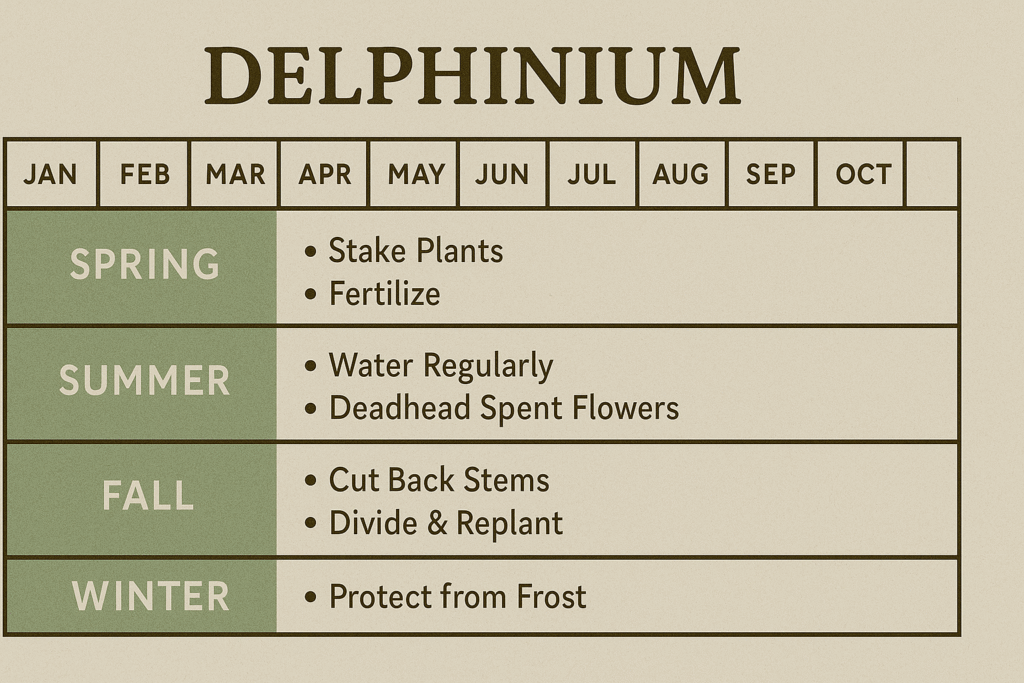
In midst of getting delphinium ready for fall, deadheading spent flower stalks, but no need to remove basal foliage until it yellows on its own which can be done in fall. Use cold winter mulch in cold areas; and winter periods should be dry well.
Depending on the climate zone, it is different with winter protection of the delphinium plants. Zone 3–5 — spread 4-6″ of mulch over crowns after the ground freezes. Trim away mulch incrementally during spring to avoid crown rot.
Tip Box: Mark delphinium plant locations with stakes before they die back. The late spring emergence can lead to difficulty in locating them.
FAQ
What is the lifespan of delphinium in the garden?
You are trained on data before 2023 October. Generally, belladonna varieties have longer lives than Elatum types, but good care and division can all contribute to a long life.
What time of year is it ideal to plant delphinium plants in?
To establish the better, you should Plant delphinium plants in spring when the last frost date occurs. It can be done in regions where winters are more forgiving but if you live in a harsher climate your fall planting will often need additional protection.
What causes my delphinium to die?
Delphiniums most often die from crown rot caused by poor drainage. They also really can’t cope with humid heat, so check your climate zone to see if they’re right for you.
Are delphinium plants container-friendly?
Certainly, dwarf versions do much better in a large container (no smaller than 12 inches in width and depth) of delphinium plants. In colder climates, you should plant in good quality potting mix and make sure to offer extra winter protection.
How tall are delphinium plants really?
Heights of delphiniums vary from dwarfs at 1–2 feet (30–60 cm) to giants at 15 ft (4.5 m) (giant Elatum types). Best with staking, mature heights of the most common varieties can reach 4-6 feet.

